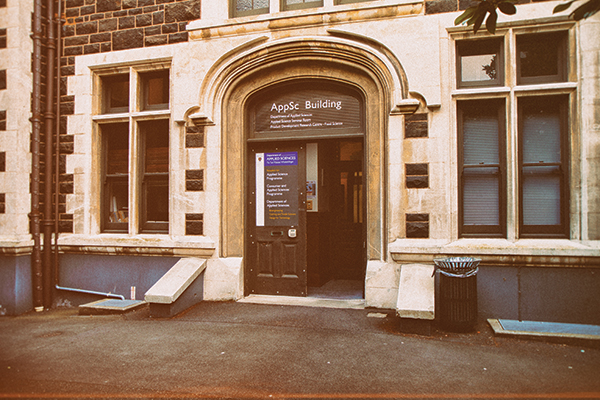Applied Sciences locks out students
Design students’ obvious snuggling deemed an unsafe biohazard
Jason Williscroft, a third-year student studying design, told Critic, “Locking the doors down at 5pm doesn’t just affect those who put work off until the last minute, it impacts on groups of us who want to meet up and work on a project; and those who like to stay in late to get things done.” The design computers also use a different account system to the rest of the University, “so when meeting up elsewhere you don’t have access to your previous work, or the software required to keep working.” Williscroft believes his grades will suffer as a result of the rule change. “This change impacts all of us and limits the amount of time we can spend working on assignments.”
Williscroft told Critic, “The Department’s resources don’t just benefit studies, their use is often required to complete assignments. Nearing the end of assignments, some of the resources are often booked out or being used for the entire daytime, so I’ve personally found it essential to come in afterhours and get things done.”
Working on assignments is also extremely difficult for students to complete on their personal computers. Williscroft said, “The software we use is all industry standard.” Students require access to programs such Adobe Photoshop, Illustrator and CAD (Computer-Aided Design). A student license for such programs can cost around $170 per year. Williscroft said, “It’s not just computers that we need as well. Most of our work involves working as groups, using the printers and other materials.”
In regards to the reasoning behind the new rule, Professor Raechel Laing, HOD of Applied Sciences, told Critic, “We need to ensure health and safety for students and staff, security of premises and student access to specialist software required for their courses.” She said, “Particularly given the building is shared with another department.”
Laing assured Critic that “during the second semester, labs are largely free of scheduled classes. This enables students the freedom to operate as needed during normal working hours and ensures they can take advantage of the teaching and learning support of specialist staff.” In regards to how student grades will be affected, she believes “Increased interaction with staff should positively affect the studies of our students.”
However, design students have argued that it is extremely difficult to fit in time to complete assignments before 5pm, due to an already hectic timetable. “Doing four papers in a semester can fill up your timetable, or leave you with awkward gaps and clashes,” said a student. “Based on the number of others who I also see at all hours of the night working in there, it is obvious that they struggle as well,” he said.
Due to the vast number of student complaints, Applied Sciences staff met with students this past Monday to decide on an alternative. “We have voiced our opinion, and [Professor Laing] is deliberating on how to formulate a solution,” Richard Rishanghan, class representative for DESN201 told Critic. “Current solutions around allowing one computer lab to be opened, with a terms of use agreement signing are being looked at.”
Regarding the meeting, Laing told Critic, “The issue of hours of access to the Applied Sciences stone building for undergraduate students taking papers in Design for Technology is under discussion.” She said, “Several options are now being considered, including the current opening hours and an extension of these ... Use of facilities and the facilities themselves are under review much of the time: the goal is always how best to provide for students and staff.”
Specialist software is also expected to be available 24/7 at West Cal lab in the near future.




